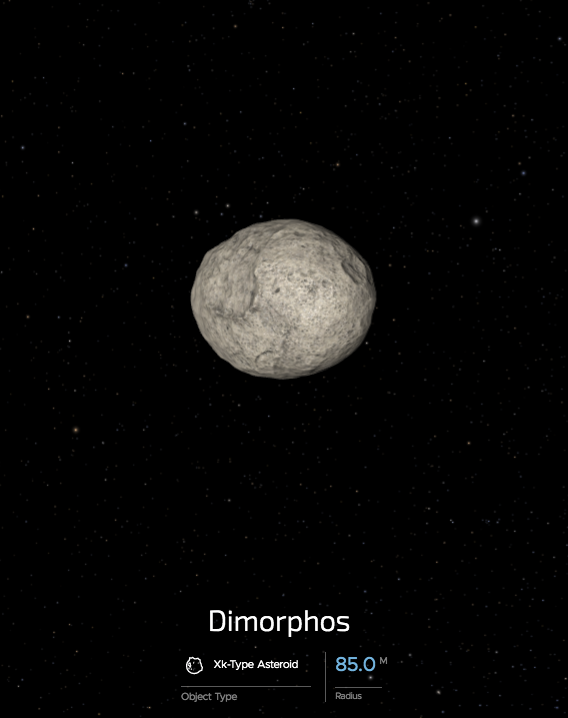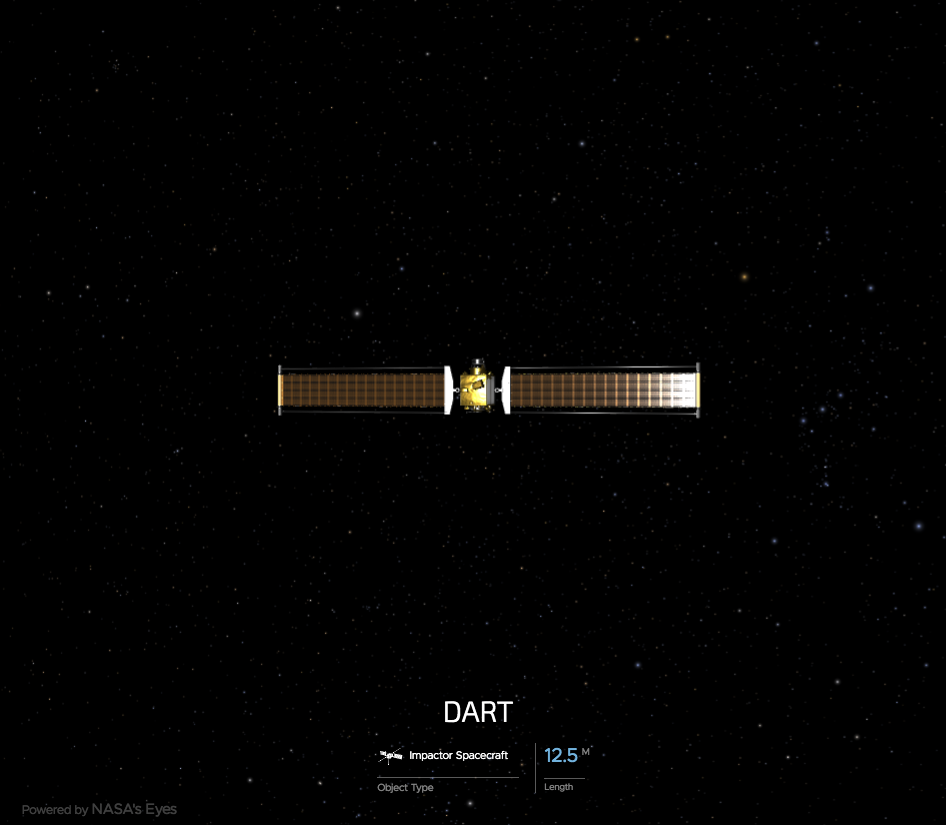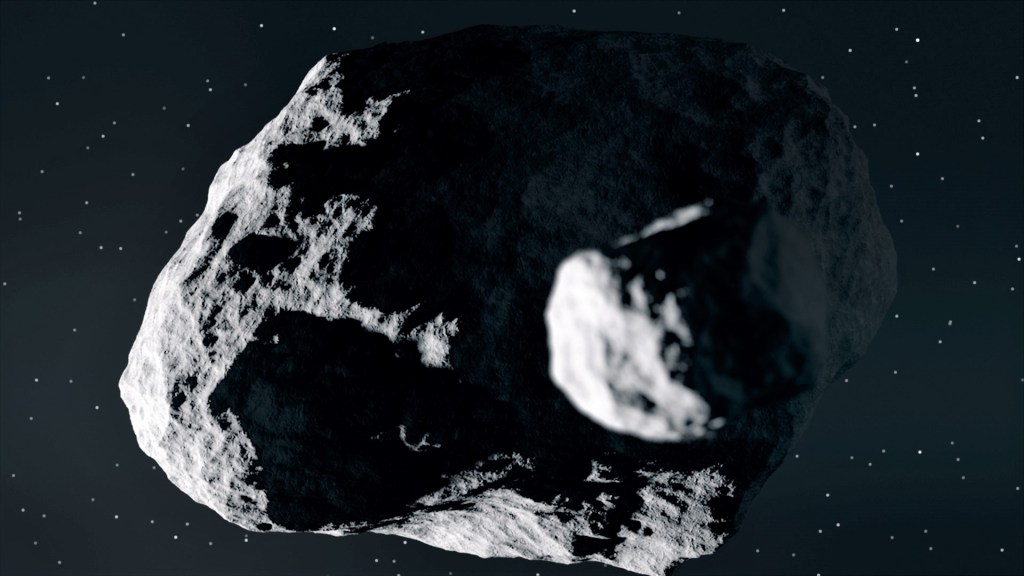It looks like you're using an Ad Blocker.
Please white-list or disable AboveTopSecret.com in your ad-blocking tool.
Thank you.
Some features of ATS will be disabled while you continue to use an ad-blocker.
share:
originally posted by: Dalamax
That is awesome until someone f*cks up and knocks an asteroid into earth.
Or does it with intent to destroy. Or to blackmail the whole world into doing it’s wishes. While they hang out off world with champagne and caviar to celebrate when the main event kicks off.
The mind boggles
a reply to: putnam6
Considering we have only identified 40% of the NEO asteroids over the danger threshold, this test is pertinent as is hows we can target an asteroid, hit it, and modify its trajectory minutely. IIRC correctly its closest approach to earth will be in 2062, and even then it's over 800,000 kilometers or more away.
FWIW there isn't enough kinetic energy available to change its course but just by a fraction of less than 1%, this is more like a mission just to see if #1 if they can hit one and if we can be able to measure its effect. Because it's orbiting another asteroid they should be able to measure the differences and know how fast and how big we would need an impactor to be on a potential earthbound asteroid
www.technologyreview.com...
It starts with NASA’s Double Asteroid Redirection Test (DART). A half-ton chunk of metal will launch in July 2021 and make its way toward 65803 Didymos, a binary asteroid (made up of one big asteroid orbited by a smaller “moonlet”). After 16 months, DART will arrive at Didymos and crash into the moonlet at more than 14,700 miles per hour.
The collision ought to be enough to change the orbit and velocity of the moonlet around the primary body by a fraction of a percent—a tiny amount, but measurable by Earth’s telescopes nonetheless. An Italian-made cubesat called LICIACube will separate from DART right before impact and take direct images of the collision. If it works, it will be the first time in history humans have physically changed the orbital trajectory of a space-based object.
DART will also be testing out a pair of novel spaceflight technologies. The first is a new solar electric propulsion system, called NASA Evolutionary Xenon Thruster-Commercial (NEXT-C). It’s based on a system first used on the Dawn mission launched over a decade ago, to study the protoplanets Vesta and Ceres. The second is Small-body Maneuvering Autonomous Real-Time Navigation (SMART Nav), a new algorithm for spacecraft guidance and navigation control. SMART Nav will be responsible for aiming DART at the moonlet.
DART will also be testing out a pair of novel spaceflight technologies. The first is a new solar electric propulsion system, called NASA Evolutionary Xenon Thruster-Commercial (NEXT-C). It’s based on a system first used on the Dawn mission launched over a decade ago, to study the protoplanets Vesta and Ceres. The second is Small-body Maneuvering Autonomous Real-Time Navigation (SMART Nav), a new algorithm for spacecraft guidance and navigation control. SMART Nav will be responsible for aiming DART at the moonlet.
dart.jhuapl.edu...
DART Impactor
DART is a low-cost spacecraft. The main structure of the spacecraft is a box with dimensions of roughly 1.2 × 1.3 × 1.3 meters (3.9 × 4.3 × 4.3 feet), from which other structures extend to result in measurements of roughly 1.8 meters (5.9 feet) in width, 1.9 meters (6.2 feet) in length, and 2.6 meters (8.5 feet) in height. The spacecraft has two very large solar arrays that when fully deployed are each 8.5 meters (27.9 feet) long. DART will navigate to crash itself into Dimorphos at a speed of approximately 6.1 kilometers (3.8 miles) per second. The total mass of the DART spacecraft is approximately 1,345 pounds (610 kilograms) at launch and 1,210 pounds (550 kilograms) at impact. DART carries both hydrazine propellant (about 110 pounds, or 50 kilograms) for spacecraft maneuvers and attitude control, and xenon (about 130 pounds, or 60 kilograms) to operate the ion propulsion technology demonstration engine. The spacecraft will use at most 22 pounds (10 kilograms) of xenon.


edit on 24-8-2022 by putnam6 because: (no reason given)
originally posted by: putnam6
FWIW let's freak out yet...this isn't Space 1999
It's not gonna blow up Dimorphus or create chunks of it, it's only 530 feet and if by some crazy happenstance it was on a direct collision course with earth it would likely disintegrate completely or skip and bounce off the atmosphere.
www.nasa.gov...
.
Unless unknown to NASA Dimorphus is made of element 115 , and the resulting explosion will destroy half the galaxy.
originally posted by: bluemooone2
originally posted by: putnam6
FWIW let's freak out yet...this isn't Space 1999
It's not gonna blow up Dimorphus or create chunks of it, it's only 530 feet and if by some crazy happenstance it was on a direct collision course with earth it would likely disintegrate completely or skip and bounce off the atmosphere.
www.nasa.gov...
.
Unless unknown to NASA Dimorphus is made of element 115 , and the resulting explosion will destroy half the galaxy.
Isn't Ununpentium artificially made? much less is it even explosive?
originally posted by: VictorVonDoom
Sounds like the beginning of a bad B movie.
Scientists test a new asteroid deflection system by changing the movement of an insignificant asteroid. Unfortunately, that asteroid collides with another asteroid which hits a larger asteroid which sends the larger asteroid on a collision course with the Moon. The Reptiles living on the Moon interpret this as an attack. They destroy the larger asteroid and launch a full scale invasion on Earth.
The movie has a happy ending though. The Reptilians kill our leaders, reduce our technology back to the 1800's, and warn us to never venture into space again.
Love it !!
Not a bad alternative, considering Bruce Willis is no longer available to drill a hole for a nuke
originally posted by: bluemooone2
originally posted by: putnam6
FWIW let's freak out yet...this isn't Space 1999
It's not gonna blow up Dimorphus or create chunks of it, it's only 530 feet and if by some crazy happenstance it was on a direct collision course with earth it would likely disintegrate completely or skip and bounce off the atmosphere.
www.nasa.gov...
.
Unless unknown to NASA Dimorphus is made of element 115 , and the resulting explosion will destroy half the galaxy.
Thought of this thread when I found this on youtube, it gives us a better idea of the size of the impact. Ofcourse it could be targeting an alien on the asteroid , I suppose
"We're all in this together"! ... "One planet, one world"!.
We as a "humanity" must get over our "political", "religious" and "tribalism"....We face "galactic threats" now. The kind that mankind has never witnessed before"! Because they weren't there 300 years ago. Until "science" came along, and released you from your ignorance! Now we must be afraid of things, and live in fear. ...
To survive? We must trust "science"! Because you're an idiot, and are only here out of luck.
Your ancestors had no F'n clue how to survive. The fact that you are here, is proof!
Only "science" can save humanity and the world.
Blah, blah and blah!
We as a "humanity" must get over our "political", "religious" and "tribalism"....We face "galactic threats" now. The kind that mankind has never witnessed before"! Because they weren't there 300 years ago. Until "science" came along, and released you from your ignorance! Now we must be afraid of things, and live in fear. ...
To survive? We must trust "science"! Because you're an idiot, and are only here out of luck.
Your ancestors had no F'n clue how to survive. The fact that you are here, is proof!
Only "science" can save humanity and the world.
Blah, blah and blah!
originally posted by: Blackfinger
Will Mars think it as a Hostile action?
When asked to comment about the situation, the Martian ambassador said, "Ack ack ack ack ACK ack? Ack ack!"
If they keep their promise, the price of element 115 will skyrocket.
new topics
-
Results of the use of the Oreshnik missile system in Dnepropetrovsk
World War Three: 23 minutes ago -
Nigel Farage now the Most Favoured UK Politician
Regional Politics: 1 hours ago -
Little Johnny and Larry should team up
General Chit Chat: 8 hours ago -
Will Us use alien technology to fight in ww3?
World War Three: 8 hours ago
top topics
-
Elon Says It’s ‘Likely’ He Buys Tanking MSNBC
Political Ideology: 17 hours ago, 16 flags -
Little Johnny and Larry should team up
General Chit Chat: 8 hours ago, 5 flags -
Shane Gillis commercial
Jokes, Puns, & Pranks: 14 hours ago, 4 flags -
Will Us use alien technology to fight in ww3?
World War Three: 8 hours ago, 1 flags -
Nigel Farage now the Most Favoured UK Politician
Regional Politics: 1 hours ago, 1 flags -
Results of the use of the Oreshnik missile system in Dnepropetrovsk
World War Three: 23 minutes ago, 0 flags
active topics
-
Jaguar Rebrand Video Causes "WTF?" Moment - Seriously Weird
Automotive Discussion • 22 • : JAY1980 -
Results of the use of the Oreshnik missile system in Dnepropetrovsk
World War Three • 2 • : RussianTroll -
Nigel Farage now the Most Favoured UK Politician
Regional Politics • 4 • : onestonemonkey -
Well we know Putins ICBMs won't fail in their silos
World War Three • 179 • : andy06shake -
Will Us use alien technology to fight in ww3?
World War Three • 10 • : andy06shake -
Why isn't Psychiatry involved?
Social Issues and Civil Unrest • 13 • : ADVISOR -
WATCH LIVE: US Congress hearing on UFOs, unidentified anomalous phenomena
Aliens and UFOs • 152 • : Lazy88 -
Biden's "Reckless" Decision To Escalate Russia-Ukraine War
World War Three • 123 • : BedevereTheWise -
Elon Says It’s ‘Likely’ He Buys Tanking MSNBC
Political Ideology • 74 • : andy06shake -
Montelukast affects brain, caused 5 year old to attempt suicide
Medical Issues & Conspiracies • 10 • : DeadlyStaringFrog

